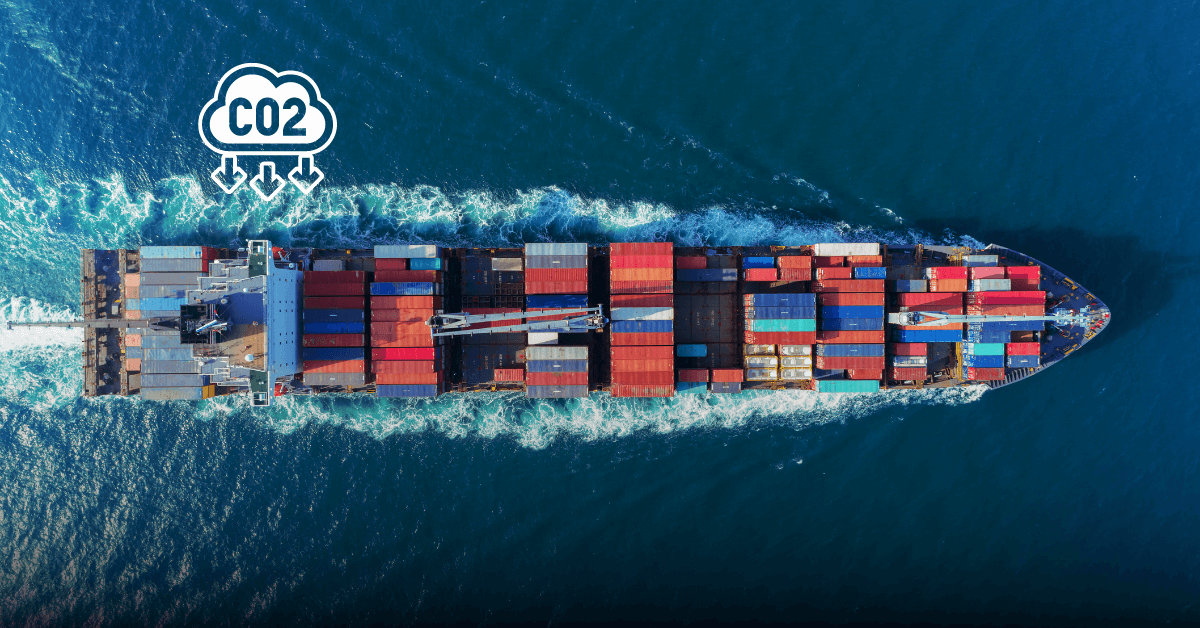Efficient Ocean Shipping
Efficient ocean shipping technologies aim to reduce the environmental impact of maritime transport through improved ship design, alternative fuels, and operational efficiencies.
 Image Credit: Marine Insight
Image Credit: Marine Insight
job openings
View open jobs in this Solution
Example Companies
- Norsepower Oy - Norsepower Oy is a clean technology and engineering company pioneering the generation of renewable wind energy.
- Ayro - Ayro is a shipping wind power company which designs and delivers wind propulsion systems such as Oceanwings, for maritime transport.
- ZeroNorth - ZeroNorth is a Clean Tech company that is using data connected on a digital platform to support shipping's decarbonisation.
- Maersk - Leading shipping company committed to reducing its carbon footprint through innovative technologies.
- CMA CGM - Global shipping company focusing on sustainable practices and alternative fuels.
- Wärtsilä - Provides advanced technologies and lifecycle solutions for the marine and energy markets.
- Hapag-Lloyd - Implements energy-efficient measures to reduce emissions in its fleet.
- NYK Line - Focuses on green shipping initiatives and environmental sustainability.
Overview
Learn More
Progress Made
Significant advancements have been made in efficient ocean shipping technologies:
- Efficient Engines: Development of more fuel-efficient ship engines.
- Fuel-Efficient Vessels: Design improvements for better fuel efficiency.
- Wind-Assisted Propulsion: Utilizing wind power to reduce fuel consumption.
Critical Goal
The biggest benchmark from Speed & Scale
By 2050, achieve net-zero emissions for the maritime sector.
Use their news tracking tool to track progress
Solutions by Sector
Ship Design
- Hull Optimization: Designing hulls to reduce drag and improve fuel efficiency.
- Lightweight Materials: Using advanced materials to reduce ship weight.
- Energy-Efficient Propulsion: Developing propulsion systems that maximize energy efficiency.
Case Studies:
- Maersk Triple-E Class Vessels: Designed for energy efficiency and environmental performance, reducing CO2 emissions by 20% per container moved (Maersk).
- CMA CGM Jacques Saadé: World's first LNG-powered ultra-large container ship, reducing CO2 emissions by 20% (CMA CGM).
- Wärtsilä's Hybrid Propulsion Systems: Combines conventional engines with electric propulsion for reduced fuel consumption (Wärtsilä).
Alternative Fuels
- LNG (Liquefied Natural Gas): Using LNG as a cleaner alternative to traditional marine fuels.
- Biofuels: Developing and using biofuels derived from renewable sources.
- Hydrogen Fuel Cells: Exploring hydrogen as a zero-emission fuel for ships.
Case Studies:
- Hapag-Lloyd's LNG Conversion: Retrofitting existing ships to run on LNG, reducing emissions (Hapag-Lloyd).
- NYK Line's Hydrogen Fuel Cell Project: Developing hydrogen-powered ships to achieve zero emissions (NYK Line).
- GoodFuels Biofuel Trials: Partnering with shipping companies to test and implement biofuels (GoodFuels).
Operational Efficiency
- Slow Steaming: Reducing ship speed to lower fuel consumption and emissions.
- Weather Routing: Using advanced weather forecasting to optimize ship routes.
- Digitalization: Implementing digital tools to monitor and optimize ship performance.
Case Studies:
- Maersk's Slow Steaming Initiative: Implemented slow steaming across its fleet, reducing CO2 emissions by 10% (Maersk).
- CMA CGM's Weather Routing: Uses advanced weather routing software to optimize ship routes and reduce fuel consumption (CMA CGM).
- Wärtsilä's Digital Solutions: Provides digital tools for real-time monitoring and optimization of ship performance (Wärtsilä).
Lessons Learned
- Emission Reduction Potential: Efficient ocean shipping can cut maritime sector emissions by up to 30%.
- Technology Refinement: Continued development and refinement of technologies are needed for full potential.
- Successes and Failures: Mixed results highlight the need for ongoing innovation and improvement.
- Past Mistakes: Insufficient R&D investment and incomplete life cycle consideration have hindered progress.
- Continued Success: Investment in engines, alternative fuels, and efficient practices is essential.
Challenges Ahead
- Technology Development: Further refinement and efficiency improvement required.
- Cost Prohibitive: High costs hinder scalability and adoption.
- Awareness Deficit: Lack of understanding about benefits hampers investment.
- Regulatory Compliance: Meeting international regulations and standards.
- Infrastructure: Developing the necessary infrastructure for alternative fuels and new technologies.
Best Path Forward
- Research and Development: Continued investment to improve technology.
- Awareness Increase: Education and marketing campaigns about benefits.
- Incentives: Financial support through tax breaks, subsidies, etc.
- Mandates: Regulations to enforce technology adoption.
- Collaborative Development: Involving technology developers, policymakers, and end users in the development process.
Image credit: Marine Insight